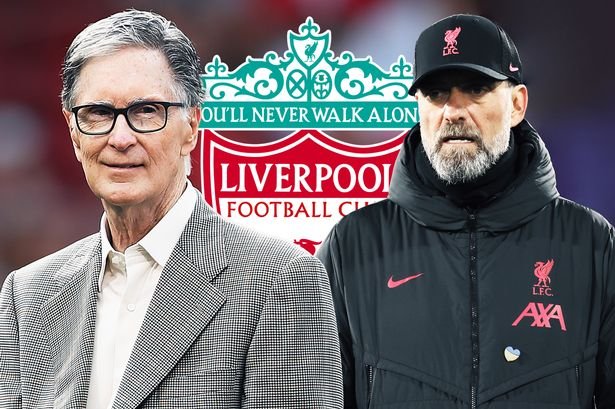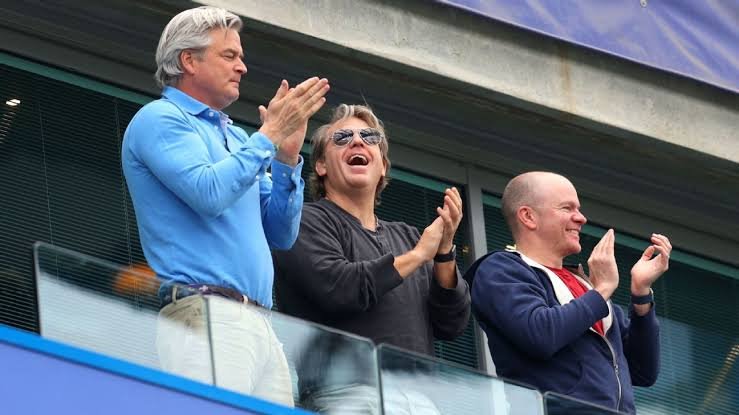Share

Liverpool are on the right side of the Premier League’s profit and sustainability rules
With the summer transfer window well and truly in full swing, the staggering sums being paid in the Premier League to sign new players seem unstoppable.
Arsenal will soon make Declan Rice the most expensive English signing in the Premier League, with the West Ham United midfielder expected to complete a £105m move to London.
Elsewhere there has been significant spending from the likes of Manchester United, who spent £60m to sign Mason Mount from Chelsea, and Newcastle United spent £55m to bring Italian midfielder Sandro Tonali to Tyneside.
The question of staying under the radar of the Premier League’s profit and sustainability rules runs deeper at some clubs than others.
Under P&S rules, clubs could lose £5million a year or £35million if backed by secure funding (i.e. firm commitment by owners or co-ownership, where owners’ loans are not sufficient).
It is being monitored over a three-year period, meaning a total of £105m could be lost over those three years. Failure to comply with the rules can lead to a variety of sanctions being imposed on the club, from fines to possible point deductions.
Due to the significant financial impact of the coronavirus pandemic, the Premier League has allowed the 2019/20 and 2020/21 periods to be combined and valued as an average of the two.

Chelsea’s huge transfer spending during the first two transfer windows of the Todd Boehly/Clearlake Capital scheme, which has seen over £600m in transfer fees, means some serious cuts are needed this summer, with artists from the the likes of Mount, Ruben Loftus-Cheek, Mateo Kovacic, Edouard Mendy, Kalidou Koulibaly and Kai Havertz all emerge from the exit door at Stamford Bridge.
Some of these outflows occurred in time to be accounted for before the end of the fiscal year on June 30, while others won’t be visible until the 2023/24 accounting period.
This means there will likely be scrutiny of spending from the London side, although they will argue they are making the right choices and some of the deals will be amortized over up to nine years. – a gap, which is now closed by UEFA.
It was already an important summer break for Liverpool.
Two midfielders have joined Alexis Mac Allister (£35m from Brighton & Hove Albion) and Dominik Szoboszlai (£60m from RB Leipzig), taking the spending already to £95m. It’s possible the spend will approach or even exceed the £150m mark by the start of the season.
For Liverpool, the focus has long been not on whether or not it can escape the rigorous scrutiny of P&S regulations, but on how many deals will affect the results of a football club that owns the one of the strongest records in European football. This is largely supported by the financial approach it takes compared to some of its competitors.
But how much leeway must Liverpool spend without getting unwanted knocks on the door from the Premier League’s watchdogs of profitability and sustainability?
In terms of knowing the exact P&S position of Premier League clubs at the moment it is nearly impossible to crack as clubs are now in new financial cycles for 2023/24 and accounts for 2022/23 are not due until they are made public in late 2023, early 2024.
However, looking at the 2021/22 accounts gives a pretty good indication of where the clubs have gone this summer.
Figures presented by football finance expert Swiss Ramble show the Reds posted an operating loss of £75m over the three-year reporting period. Although a significant figure on the face of it, only Brentford, Burnley, Wolves and Tottenham Hotspur fared better, with Chelsea the worst performers with an operating loss of £552m.

For Chelsea, meanwhile, £269m in profit from player sales helped recover from the previous record figure, with Liverpool sixth-best player with £106m in profit from player sales on the period.
Next, the net interest payable by Premier League clubs, namely interest on bond borrowings and refinancings, was assessed.
While Spurs actually made an operating profit of £5m over the three years, net interest payments for the North London side amounted to £106m linked to funding deals of the construction of the stadium.
Manchester United came second on this list with £91m. This sum was linked to the Glazer family’s leveraged takeover of the Old Trafford team in 2005. Liverpool’s place on this list was 11th at £10m.
Putting all of the above together, plus any gains from property sales, just four Premier League clubs reported pre-tax profits over the three-year reporting period. Brentford were top performers with £45m, followed by Burnley with £40m, Wolves with £26m and Liverpool with £24m.
The team that fared worst is the side with the biggest P&S headache in the Premier League right now, Everton, with the Toffees losing £287m. Of the so-called ‘big six’, three (Manchester United, Arsenal and Chelsea) were in the bottom five.
Despite heavy losses for some clubs, the main elements of this affect P&S regulation. Premier League P&S rules allow deductions for infrastructure investment, women’s football, youth development, community investment and depreciation of fixed assets (physical assets such as stadiums).
In the case of Spurs, the fall in value (£169m) due to the investment in the new stadium was by far the largest in the Premier League. Liverpool were about halfway there at £30million.
Liverpool’s allowable deductions for all of the above were £73million, the seventh highest in the Premier League but the lowest of any so-called ‘Big Six’.
Swiss Ramble’s analysis showed that, taking into account all factors, including the deduction of losses directly attributable to COVID, nine clubs were profitable under P&S regulations during the three-year period under review.
This gives an indication of the leeway clubs have in this new season, although some clubs looking at negative positions, such as Arsenal (loss of £7m), are boosted by a return to profit-making nature.
of the Champions League. to positively change their position in the future, as well as all cost-saving measures taken during the financial year just ended.
In Liverpool’s case, the Reds are negotiating a profit of £141m under P&S rules, the second-highest profit in the Premier League, behind only Spurs, who are at £231m, largely due to the amount raised by could be deducted from their position Investment in the stadium is the main reason for the negative financial impact.
Compared to their other ‘Big Six’ rivals, Manchester United are in the dark at £28m, Manchester City have plenty of room at £109m, while Chelsea still have work to do to reverse its loss of £131 million during the period in relation to the P&S rules.
However, it is a position where the profit from player sales will help significantly, especially since the sale of Mount to United and the departure of Loftus-Cheek to AC Milan are counted as pure profit because this are products of the academy. For other sales, you only see profit above book value.
However, losses of up to £105million would be allowed for some clubs based on the latest available financial information, including Everton and Chelsea, who are given such leeway. However, this is due to the fact that the clubs benefit from secure financing (irrevocable commitment of the owners / equity financing).
In the case of Liverpool, they would be entitled to a loss of £15m (£156m wiggle room on addition and valuation under P&S rules) over that period, based on information financial statements for the three-year period covered until the end of the financial year in May 2022.
because the owners did not have to make such a commitment to support the expenses in this way and therefore did not respond. The same goes for Manchester United and Arsenal (allowed £15m) and Manchester City (allowed £30m).
Bottom line, Liverpool have little to worry about potentially breaching P&S rules this summer, even if they have to keep spending big before the new season starts. However, for some of their rivals, the math will be more of a headache.

Leave a Reply